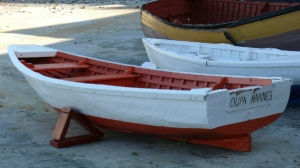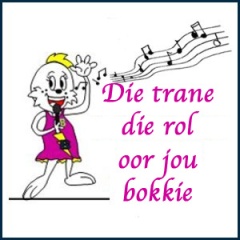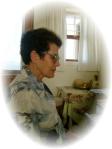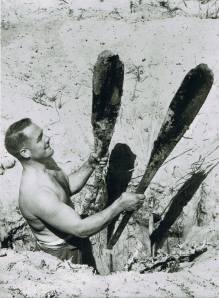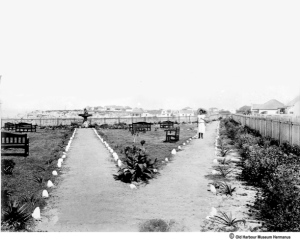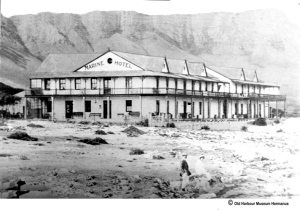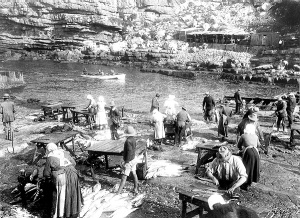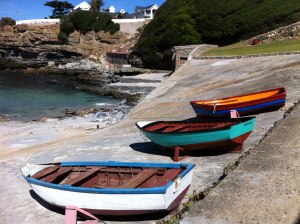 Met die lees van die storie sien ek in me gedagtes my Ouma daar vêr in Namakwaland baie jare gelede voor die wasbak staan en sing uit volle bors “Prys die Heer met blye galme” buiten dat ek na haar verlang, weet ek dat in tye van nood glo in God se Woord en hou net aan om Hom te loof.k
Met die lees van die storie sien ek in me gedagtes my Ouma daar vêr in Namakwaland baie jare gelede voor die wasbak staan en sing uit volle bors “Prys die Heer met blye galme” buiten dat ek na haar verlang, weet ek dat in tye van nood glo in God se Woord en hou net aan om Hom te loof.k
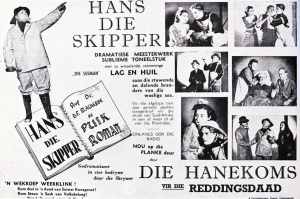 Die film Hans die Skipper is in 1953 in en rondom die Ou hawe van Hermanus gefilm. Met die lees wonderwerk op die Mayflower boot in 1901 en wonder of dit die oorsprong van die film Hans die Skipper is? Hierdie fotos is nie van die oorspronklike Mayflower boot nie, maar ‘n boot wat in die Ou Haw lê.
Die film Hans die Skipper is in 1953 in en rondom die Ou hawe van Hermanus gefilm. Met die lees wonderwerk op die Mayflower boot in 1901 en wonder of dit die oorsprong van die film Hans die Skipper is? Hierdie fotos is nie van die oorspronklike Mayflower boot nie, maar ‘n boot wat in die Ou Haw lê.
Hierdie verhaal is deur Martha Erwee van Caledon aan die Museum gegee. Dis in Hollands en Engels en dominee Dreyer van daardie tyd het dit vir haar ouers as trougeskenk gegee – vir die nageslag – Op pad na die museum het sy by Kosie du Toit langs gegaan – hy sê toe: Die Mayflower was sy pa se boot, dws dit was oom Danie du Toit (Niel se oupa) se boot.
He that will learn to pray,
Let him go to sea.
George Herbert 31 Mei 1901 Het mag niet verswegen word, en ook ter wille van het nageslacht te boek gesteld word, van hoe wonderbaar die Heere ons uit een groot gevaar op zee gered heeft!
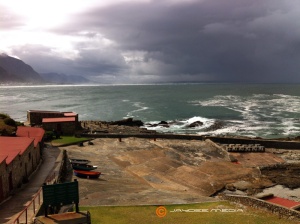 Die see lê stil en plat onder n helder volmaan. Al wat die ge-oefende seemansoor in die visbaai kan hoor, is die sagte geruis van die see en die branders wat klots teen rotse rondom hulle. Die dorp slaap nog rustig. In die baai beweeg ses man rond om visgerei en boot reg te kry. Die maanlig sal help om n paar uur ekstra vangtyd in te pas. Dis om en by halfdrie toe hulle die Mayflower in die water stoot. Die skipper is Jan Van Rhyn wat ook sy veertien-jarige seun saamneem. Die ander vissers is William Lundt, Jan Germishuizen, Pieter de Villiers en Hendrik Minnaar. Die bestemming is Gansbaai. Die weer was pragtig oop en helder en niemand kon droom van gevaar nie.
Die see lê stil en plat onder n helder volmaan. Al wat die ge-oefende seemansoor in die visbaai kan hoor, is die sagte geruis van die see en die branders wat klots teen rotse rondom hulle. Die dorp slaap nog rustig. In die baai beweeg ses man rond om visgerei en boot reg te kry. Die maanlig sal help om n paar uur ekstra vangtyd in te pas. Dis om en by halfdrie toe hulle die Mayflower in die water stoot. Die skipper is Jan Van Rhyn wat ook sy veertien-jarige seun saamneem. Die ander vissers is William Lundt, Jan Germishuizen, Pieter de Villiers en Hendrik Minnaar. Die bestemming is Gansbaai. Die weer was pragtig oop en helder en niemand kon droom van gevaar nie.
Saam met n ligte Suidooswindjie klink die woorde van n Sankeylied op. Dit word gevolg met Komt treën wij dan gemoedigd voort. Eenklaps is daar n gedruis. Die Noordwes het plotseling opgekom. Uit vrees dat die Mayflower kan omslaan, word die seile vinnig gestryk en begin hulle teen die wind in roei. Huiswaarts keer, was al raad. Die maan was steeds helder, maar die bemanning wens dat dag wil breek. Hulle gooi een anker uit. Teen ligdag word die seile weer gespan, maar die wind is so sterk en het boonop Noord gedraai, dat hulle dit weer moes stryk. Dit help niks en Mayflower dryf voort in n woeste see.
Meteens gryp die branders en slaan drie van die roeispane in die water. Tot hul groot geluk kon hulle twee van die spane uit die see terugkry. Die derde een, die sterkste en miskien die een waarin hul meeste vertroue gehad het, dryf weg. Dis nou baie duidelik dat doodsgevaar oor die manne hang. Die enigste hoop op redding is God alleen. Menslikgesproke is daar hoegenaamd geen kans om lewendig aan land te kom nie. Soos een man neem hul nou hul toevlug na die Here.
Een vir een kniel die manne in die skuit om te bid. Hul smeek dat God hul sal red. In Ps 50:15 sê die Here: Roep mij aan in den dag der benaawdheid, Ik zal er u uithelpen. Hulle bring plegtige beloftes voor die Heer. Doodangs was op elke gelaat. Die see word hoe langer, hoe onstuimiger. Willem Lundt was die vorige aand in die biduur in die kerk waar gebid is dat elkeen gereed sal wees om God te ontmoet.
Daar word weer gebid, elke man bid tweemaal. Die doodsangs is gebreek and alles word kalm. Willem vra: Glo elkeen van julle dat die Here magtig is om uit te red? Een vir een antwoord: Ja, ek glo. Dis nou omstreeks 12 uur die middag. Die Here beskik genadiglik dat elkeen sy sinne behou. Elkeen doen net sy uiterste beste. Alhoewel hul oortuig is dat die Here hul sal red, span hul kragte saam om uit die gevaar te kom.. Dit was n groot teleurstelling toe die ankel vashaak. Daar word sterk teen die ankertou geroei om te probeer om dit los te kry. Durentyd praat hul mekaar moed in.
Die golwe rol soos groot berge rondom die skuit, maar wonderbaarlik kom geen water binne-in nie. Dit is vir hulle baie duidelik dat die Here met hul is. Terwyl Psalm 146 opklink, hoor hul mekaar se stemme beswaarlik bo die sterk wind. Prys den Heer met blyde galmen, o myn siel, daars ryke stof ….. En Hom grootmaak in my lied. Dis nou omtrent vier-uur die middag.
Skielik begin dit reën en die wind bedaar. Dankwoorde word na die Skepper uitgespreek. Die anker lig en verligte vissermanne begin huiswaarts vaar. Toe een van die seile skeur, is hul verplig om te roei. Alles gaan voorspoedig en sewe-uur die aand bereik hul die visbaai, styf en afgemat na sestien uur in lewensgevaar. Geliefdes ontvang hul met groot vreugde en trane van blydskap en almal is gevul met opregte dankbaarheid teenoor die Here vir hierdie wonderwerk uit Sy Vaderhand. Prys die Here
Ek het die storie weer by S.J du Toit gekry… dis soos kampvuur stories, oorvertel van geslag na geslag
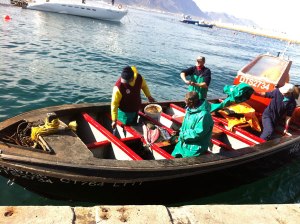 Hierdie vissermanne trotseer nog steeds die waters in en om Hermanus en gaan uit vanaf die Nuwe in Hermanus. Hierdie is ‘n foto van laasjaar se snoek loop. Laat on die vissermanne wat die see trotseer in ons gebede hou.
Hierdie vissermanne trotseer nog steeds die waters in en om Hermanus en gaan uit vanaf die Nuwe in Hermanus. Hierdie is ‘n foto van laasjaar se snoek loop. Laat on die vissermanne wat die see trotseer in ons gebede hou.
Fotos: Jaydee Media

